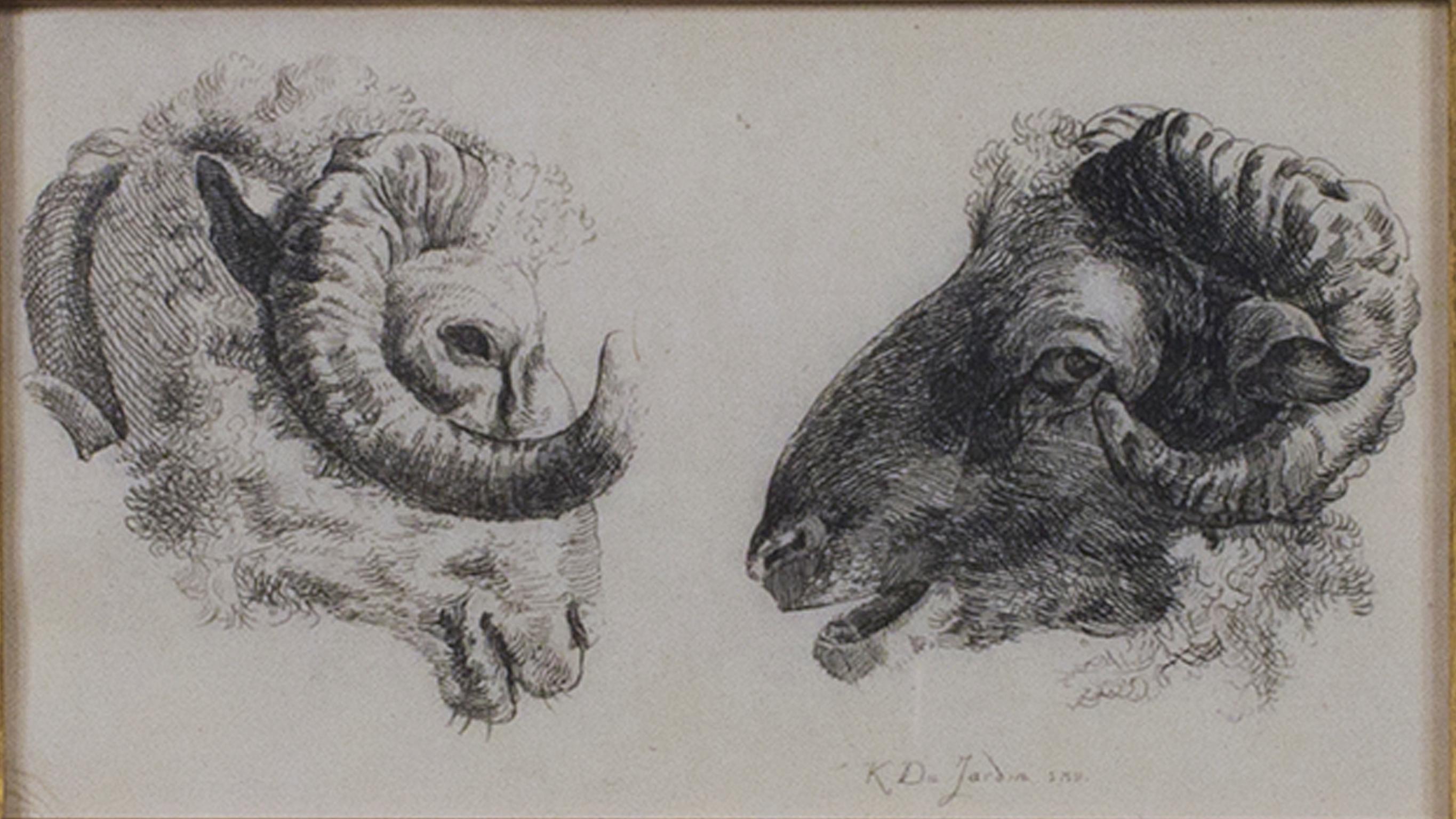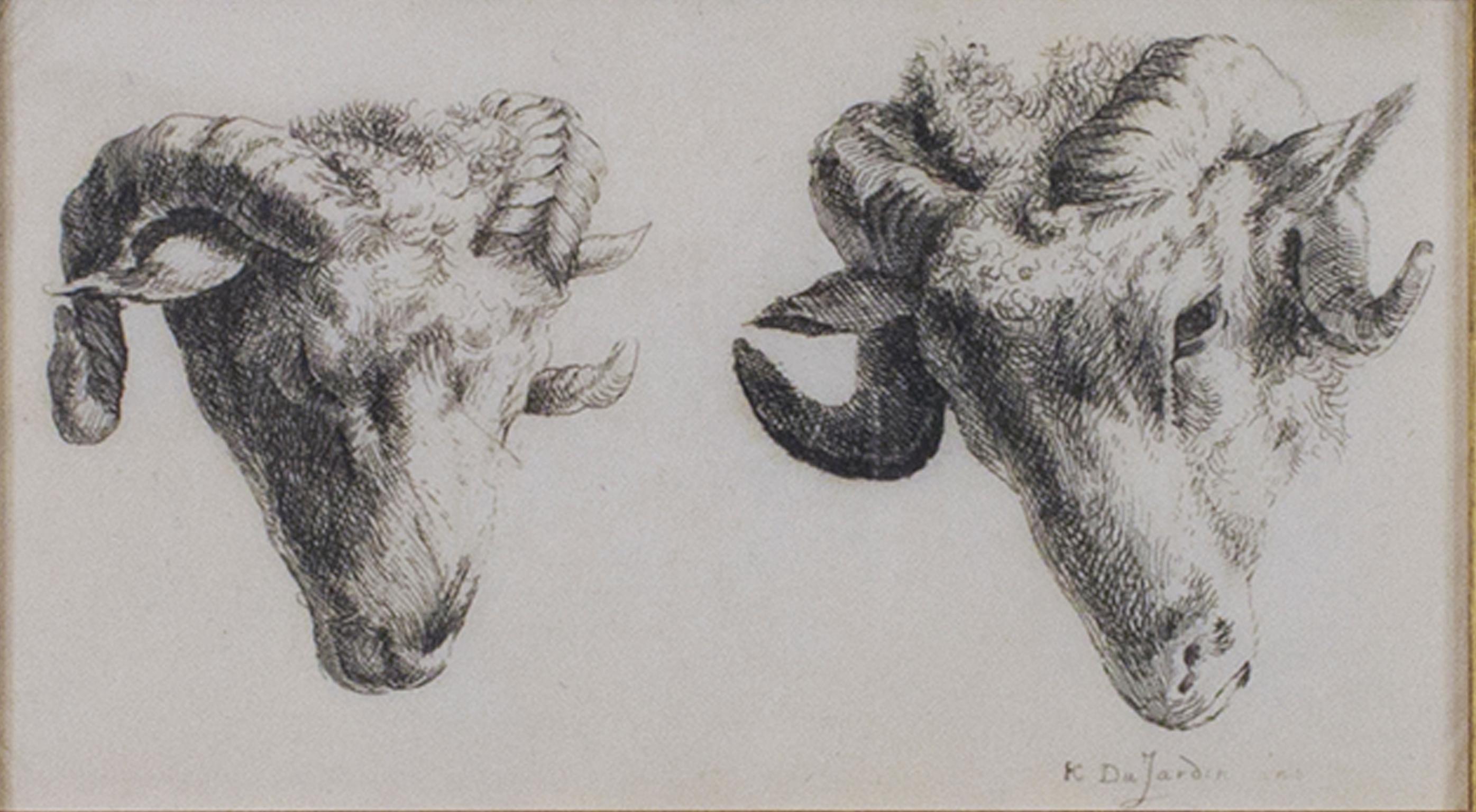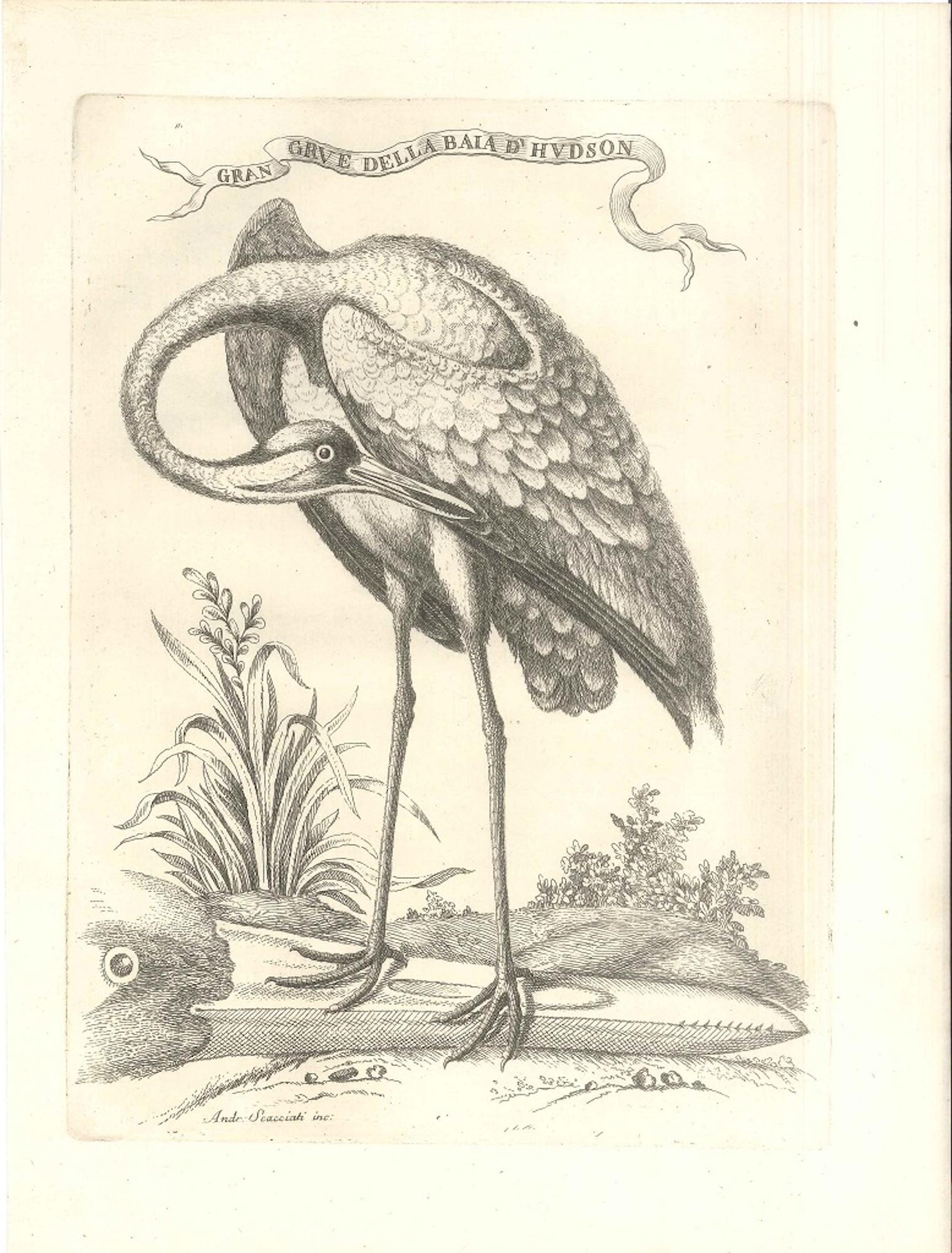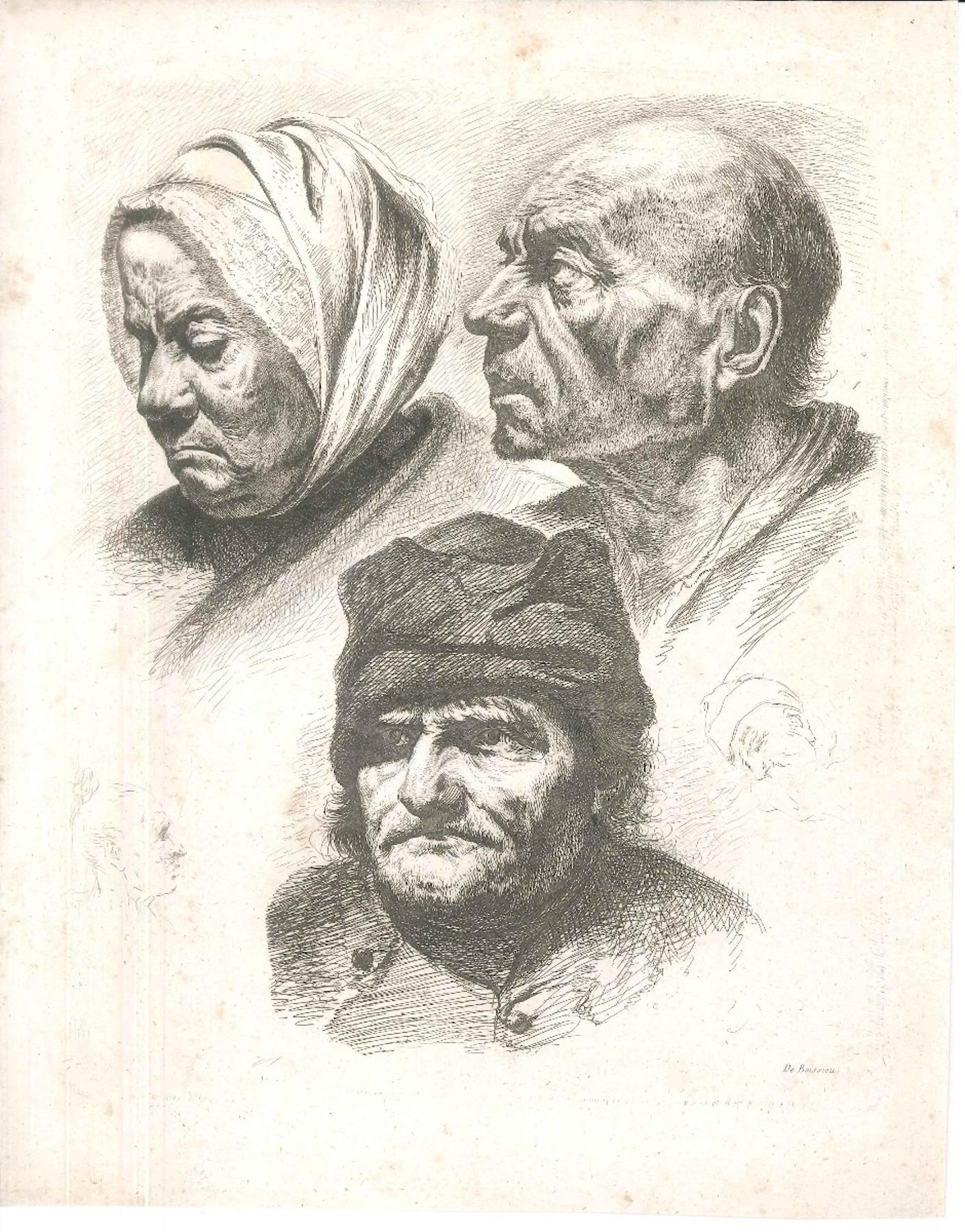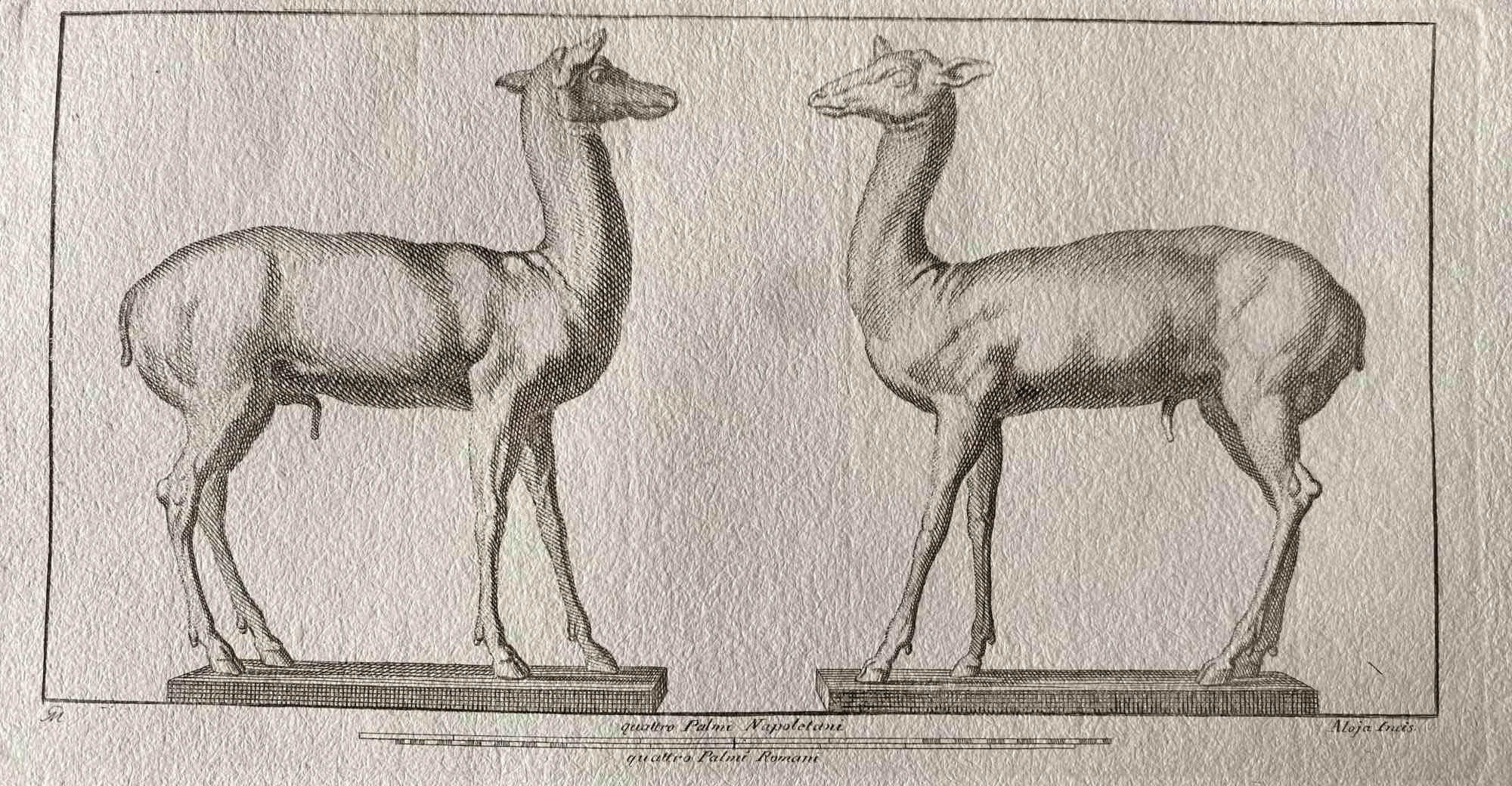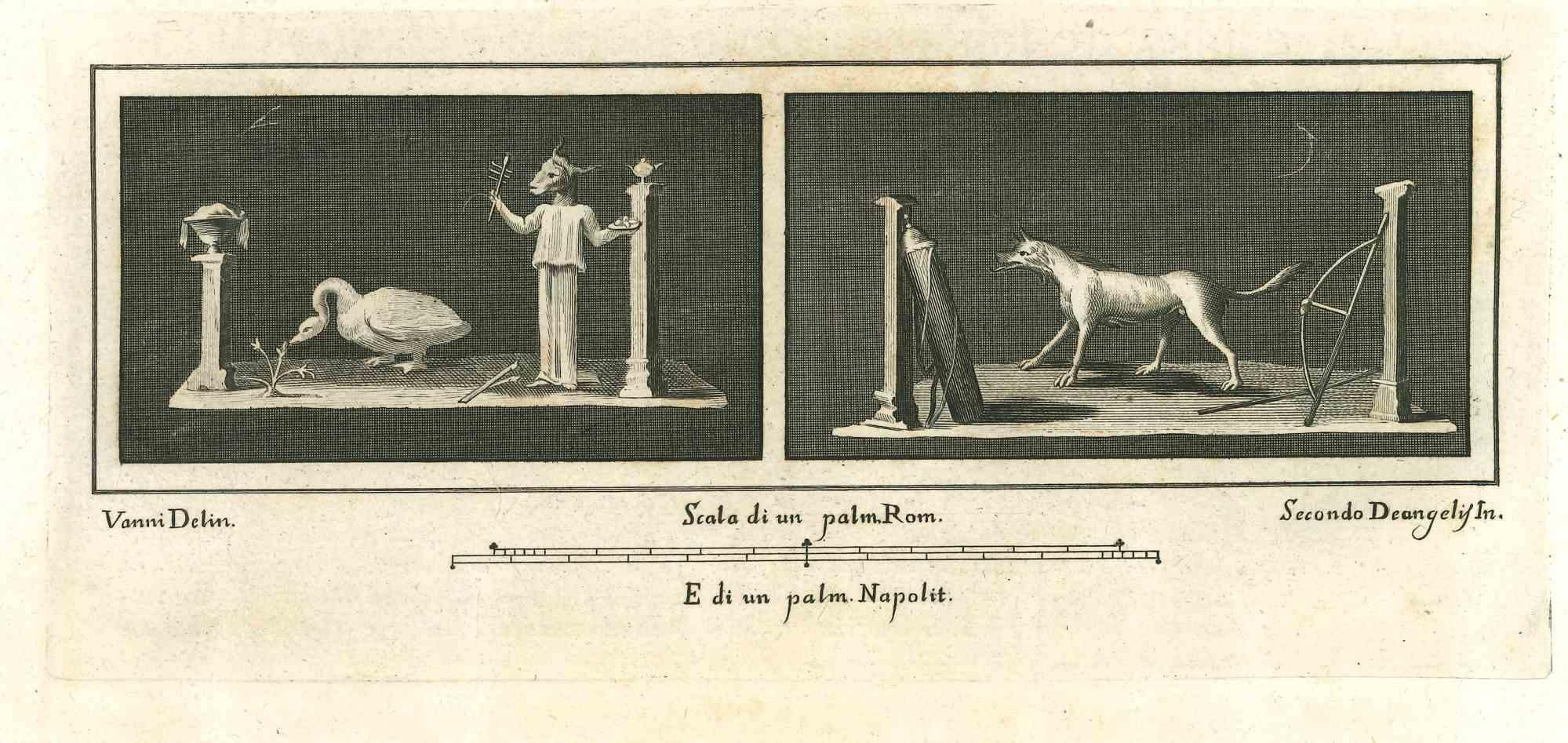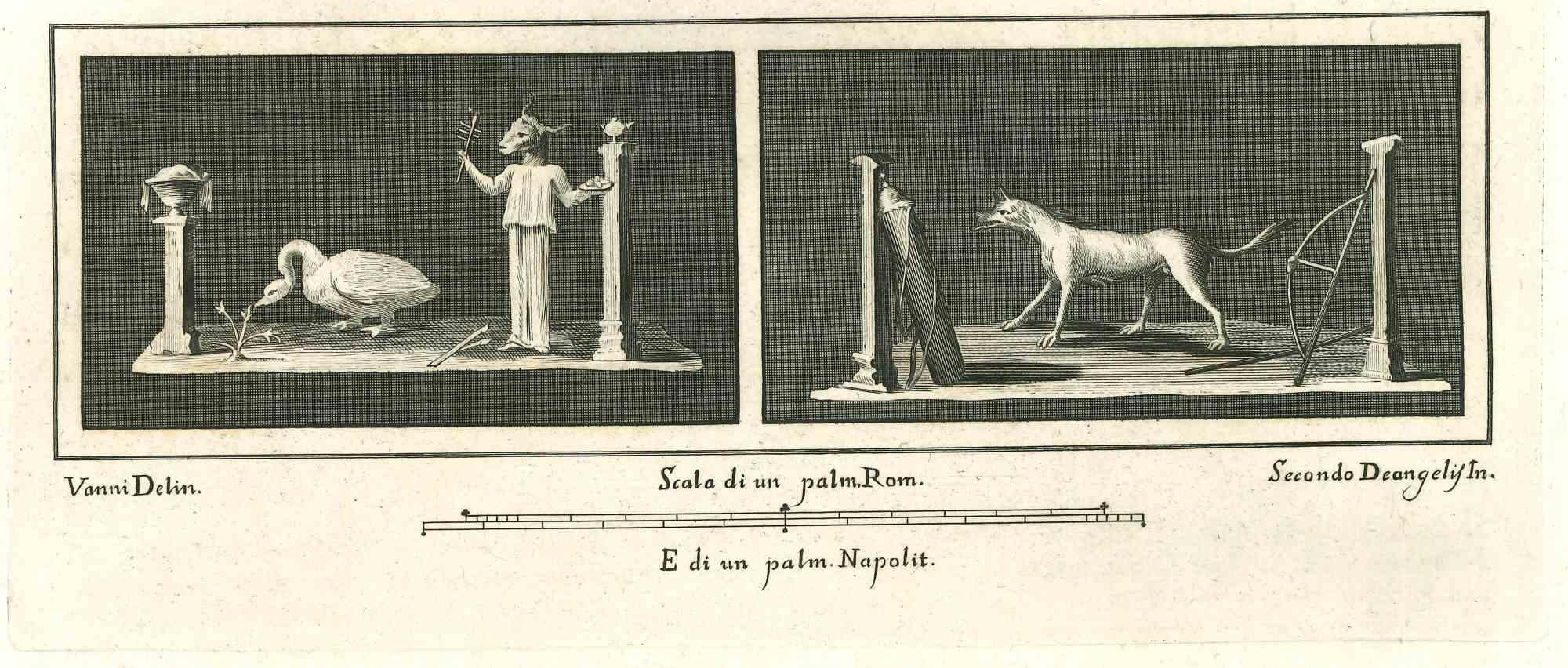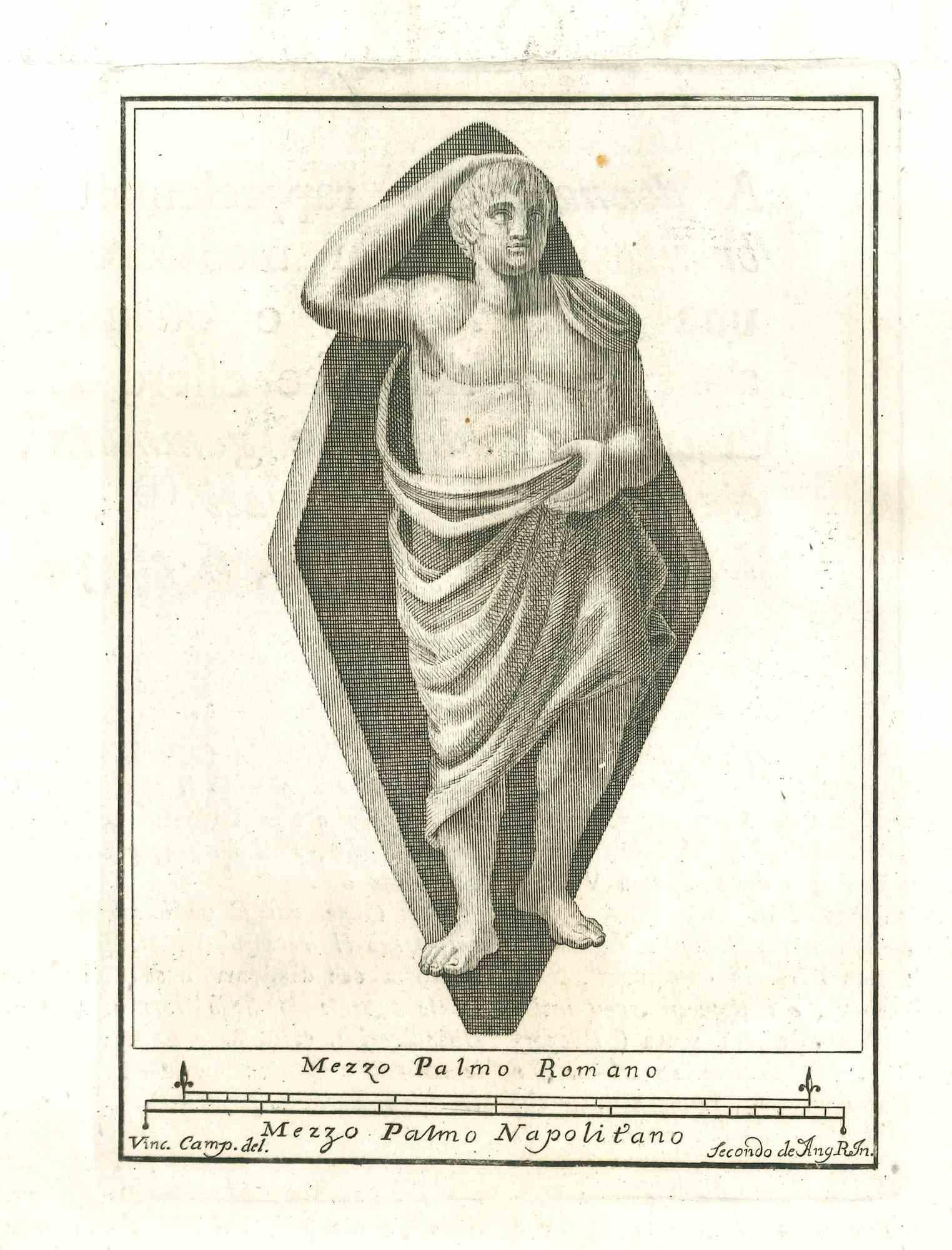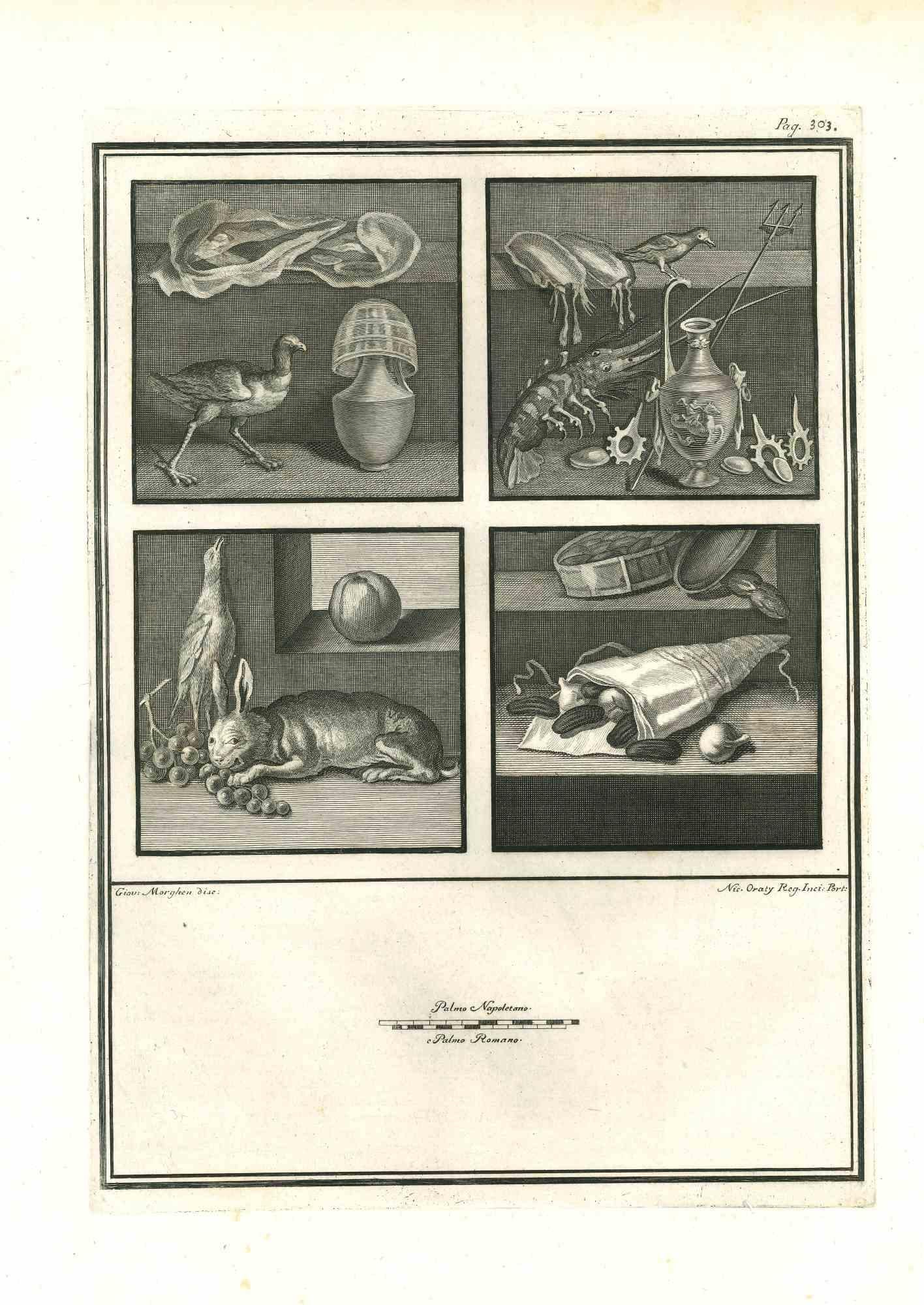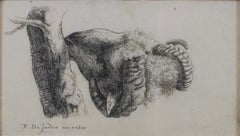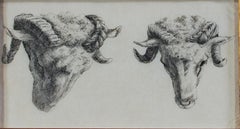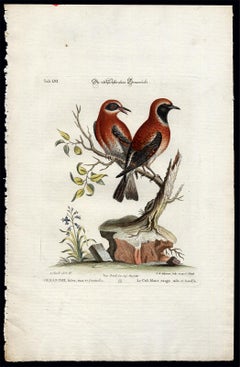
Red Warbler by Seligmann - Handcoloured etching - 18th century
View Similar Items
1 of 4
Johann Michael SeligmannRed Warbler by Seligmann - Handcoloured etching - 18th century1768
1768
About the Item
- Creator:Johann Michael Seligmann (1720 - 1762)
- Creation Year:1768
- Dimensions:Height: 15.75 in (40 cm)Width: 9.45 in (24 cm)
- Medium:
- Movement & Style:
- Period:1760-1769
- Condition:Very good, given age. General age-related toning and/or occasional minor defects from handling. Please study scan carefully.
- Gallery Location:Zeeland, NL
- Reference Number:Seller: 710041stDibs: LU59235052381
You May Also Like
- "Ram Eating Bark, " Etching signed by Karel DuJardinBy Karel DujardinLocated in Milwaukee, WI"Ram Eating Bark" is an original etching by Karel DuJardin. DuJardin completed many delicate etchings of rams. 3 3/4" x 7 3/4" art 16 3/8" x 19 1/8" f...Category
17th Century Old Masters Animal Prints
MaterialsEtching
- "Two Rams Looking Down & To Their Left, " Etching by Karel DuJardinBy Karel DujardinLocated in Milwaukee, WI"Two Rams Looking Down & To Their Left" is an original etching by Karel DuJardin. DuJardin completed many delicate etchings of rams. 3 3/4" x 7 3/4" art 16 3/8" x 19 1/2" frame Du Jardin was a master of various genres of painting, including refined and tranquil Italianising landscapes, monumental historical paintings and superb portraits of the aristocracy. Unlike the majority of his contemporaries, Karel du Jardin (b. Amsterdam 1626, d. Venice 1678) was a talented painter in not one, but many different genres. He is especially famous for his small-scale landscapes, such as the charming Italian landscape with a woman milking a goa" (1652) from the Rijksmuseum's collection. Du Jardin depicted both sun-filled Italianate scenes and Dutch farmyards with pigs and sheep. He also painted a range of elegant portraits of aristocrats and merchants. His self-portrait (1662) on copper is one of the most fascinating 17th-century portraits of a Dutch artist. Du Jardin's spectacular large-scale historical pieces, represented is the show by the impressive Conversion of Saint Pau" (1662) from the collection of the National Gallery of London, are among his most remarkable achievements; he often chose themes that were only rarely depicted by other Dutch painters of the period. During his own lifetime Du Jardin was praised by poets and writers, particularly for his attention to detail and elegant painting technique. As Cornelis de Bie, the artist’s biographer, wrote in 1661: "the surety of the brush at his finger and such sharpe clarity […] that the eye thereon doth linger." Du Jardin's valuable paintings were mainly purchased by rich individuals with an eye for elegance, but were also commissioned by prominent institutions such as the Amsterdam 'Spinhuis' (a women's prison), for whom he painted a vast group portrait of the prison-governors. Karel du Jardin was an artist who liked to travel. He lived for a time in Lyon and in Paris, and sailed with Joan Reynst, Heer van Drakestein, by ship via England, Portugal and Spain to Tangier and Algiers, where they met Michiel de Ruyter...Category
17th Century Old Masters Animal Prints
MaterialsEtching
- "Two Rams Facing Each Other, " Original Etching signed by Karel DuJardinBy Karel DujardinLocated in Milwaukee, WI"Two Rams Facing Each Other" is an original etching by Karel DuJardin. The artist signed the plate. DuJardin completed many delicate etchings of rams. ...Category
17th Century Old Masters Animal Prints
MaterialsEtching
- "Two Rams Looking Down, One Quarter View One Straight Ahead, " by Karel DujardinBy Karel DujardinLocated in Milwaukee, WI"Two Rams Looking Down, One Quarter View, One Straight Ahead" is an original etching by Karel DuJardin. DuJardin completed many delicate etchings of ram...Category
17th Century Old Masters Animal Prints
MaterialsEtching
- Gran Grue Della Baia d'Hudson - Etching by Andrea Scacciati The YoungerBy Andrea ScacciatiLocated in Roma, ITGran Grue Della Baia d'Hudson is a beautiful black and white etching on laid paper realized by the Italian artist, Andrea Scacciati. Title engraved on the higher margin, inscription ...Category
1760s Old Masters Animal Prints
MaterialsEtching
- Study of Five Heads - Original Etching by J.-J. BoissieuBy Jean-Jacques de BoissieuLocated in Roma, ITStudy of Five Heads is a beautiful black and white etching with drypoint interventions on paper, realized at the end of XVIII century by the French artist Jean-Jacques de Boissieu (Lyon, 1736- 1810). Five study of heads of which two profiles (a female and a male) are lightly sketched with the drypoint technique, and we could appreciate the incredible draftsmanship. Instead, the bigger three portraits are very detailed and etched with a superb technique. Although the subjects are drawn in different scales and with different degrees of finish, each portrait has the dignity of a unique piece and the composition is very balanced. In particular on the lower margin at the center there is the portrait of "Le Père Cotrot, Garçon Teinturier à Lyon'", an elderly man, toothless and with a large-nosed, slightly turned to left, with a hat and unbuttoned jacket over waistcoat, shows all his wrinkles in a very realistic way. Signed on plate on lower right margin “De Boissieu”. This old master’s original print with fresh impressions, is in very good conditions, except for a usual yellowing of the paper above all on the edges and some signs of the time and light foxing along the margins, do not affect the image. Jean-Jacques de Boissieu (Lyon,1736 –1810) Jean-Jacques de Boissieu was a French artist studied at the École de Dessin in Lyon, but he was mostly self-taught. His first prints were realized between 1758–64. When he went to Italy in the retinue of the ambassador and Duc de la Rochefoucauld d’Enville, he had the lifechanging encounter: he met Voltaire and he entered in the world of luminaries, he had the opportunity of realizing some plates for the Diderot-d’Alembert’s Encyclopèdie. Then he continued to produce prints in Lyon, Boissieu made many etchings of the Roman and Dutch countryside, as well as the French countryside around Lyon, which earned him a reputation as the last representative of the older etching...Category
Late 18th Century Old Masters Animal Prints
MaterialsDrypoint, Etching


